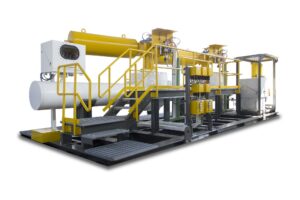IMI unveils first HIPPS for hydrogen post-production processes

The new HIPPS is specifically engineered to isolate the source of dangerous high pressure, instead of relieving the excess flow in the case of an overpressure event.
This offers a critical layer of protection for pipelines and downstream components and promotes the safe storage of hydrogen post-production, prior to its transportation to the point of use.
As a result, hydrogen producers will be able to increase both safety and availability compared to traditional pressure safety relief valves while avoiding the loss of containment.
This will facilitate an increased yield from a comparable time frame versus plants that do not deploy a HIPPS.
The system uses electronic transmitters specifically designed for hydrogen applications and an electronic logic solver to sense a potential overpressure event. If triggered, failsafe valves will be activated within two seconds to isolate the exposure and protect the downstream assets and plant personnel.
With a long-standing heritage of manufacturing HIPPS for the process industry, the hydrogen HIPPS solution complements IMI’s growing suite of technology to support the entire hydrogen value chain.
This includes its IMI VIVO PEM electrolyser, which was launched in 2023. Available in 100kW to 5MW power class skids, the IMI VIVO electrolyser can be made fully bespoke to end-user requirements thanks to a ‘turnkey’ configuration that includes a high or low-pressure storage tank, compressor and optional fuelling equipment.
IMI also provides a range of critical service valves for hydrogen applications, including ball valves and butterfly valves.
Andrea Pusceddu, business development director for hydrogen at IMI, said: “Hydrogen has huge potential to support with reducing CO2 emissions in hard-to-abate sectors such as heavy industry and long-distance transport.”













